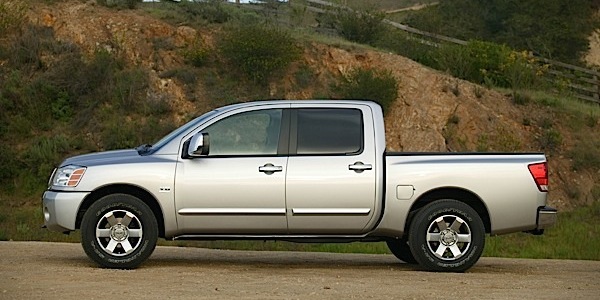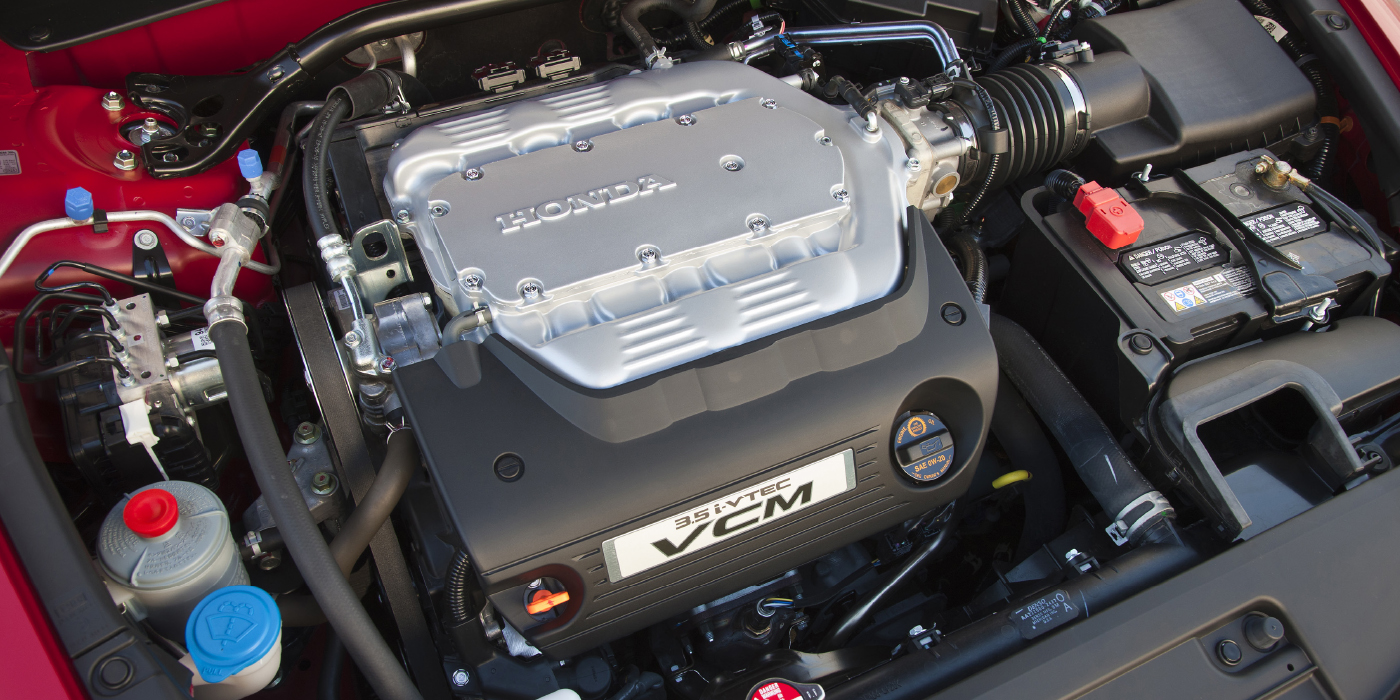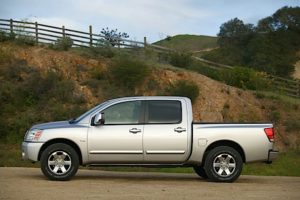 Nissan’s first attempt at producing a full-size pickup was the first-generation Titan. This generation had no major brake problems or recalls, and the brakes are fairly easy to service. Nissan had a few teething problems with brake judder and brake booster issues on 2004-‘06 models, but they were corrected with better parts and updated software.
Nissan’s first attempt at producing a full-size pickup was the first-generation Titan. This generation had no major brake problems or recalls, and the brakes are fairly easy to service. Nissan had a few teething problems with brake judder and brake booster issues on 2004-‘06 models, but they were corrected with better parts and updated software.
Front Brakes
The front brakes on the Titan use dual-piston floating calipers. Most noise and wear issues can be attributed to the guide pins not being serviced during a previous brake job. The abutment clips and slides can also cause noise and should be replaced during every brake job.
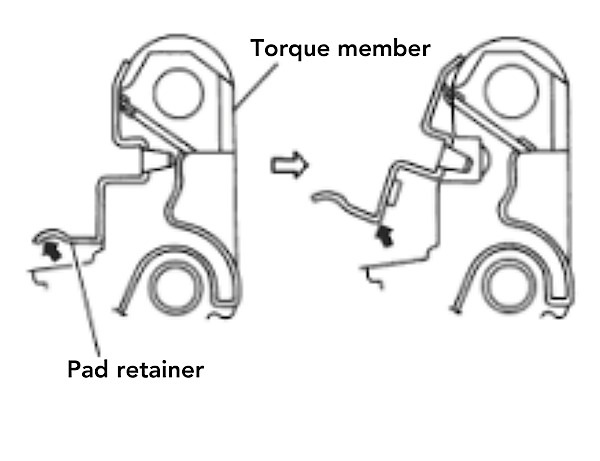
Nissan used an NAO or ceramic formulation for its front brakes. During the first few years of production, brake judder problems were reported. New pad formulations and technician education were the cure. The source of the judder problem was a combination of rotor finish and lateral runout.
Rear Brakes
The rear brakes on the Titan are discs with single-piston floating calipers. The caliper slides are located on the axle. The pads have an anti-rattle clip that needs to be positioned on the top edge of the pad so it makes contact with the body of the top slide.
Parking/Emergency Brake
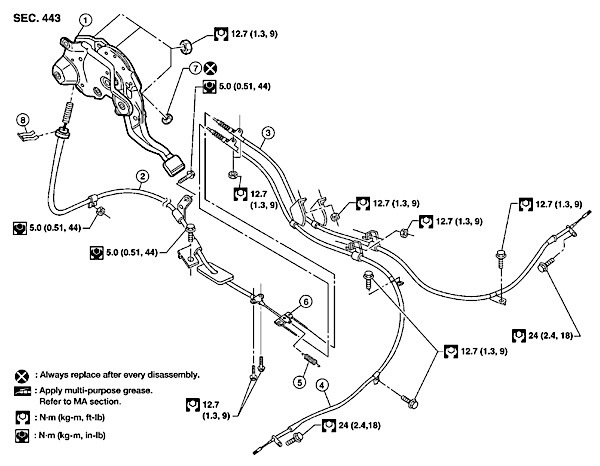
The parking brake uses two shoes. A common failure involves the friction material delaminating from the shoes and taking out the hardware in the drum. Another common failure on higher-mileage Titans is the axle seals leaking and contaminating the shoes.
The first step in adjusting the emergency brake is to release cable tension at the pedal. The pedal has to be partially engaged at first to access the nut. Using a drum-measuring gauge, the shoes should be adjusted to measure 0.6 mm smaller in diameter than the drum. After the drum is installed, adjust the pedal so it engages fully in three to four clicks.
Front Wheel Speed Sensors
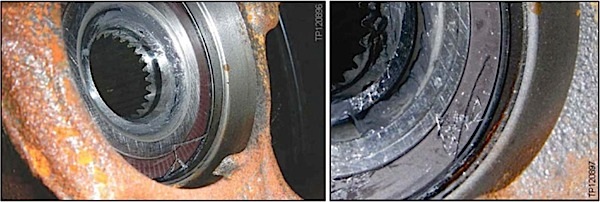
One of the most common codes you will run across on Titans in the rust belt states are ABS codes C1101-C1108. These are codes for the wheel speed sensors that indicate a failure or short. In some cases, what they really mean is that metallic debris has built up on the reluctor ring of the inner seal on the front wheel bearings. These are active wheel speed sensors and the ring has magnets embedded in the seal. The metallic debris can interfere with the sensor and set codes.
Other Issues
Titans are sensitive to brake pedal free height for the emergency brake assist feature to work. The brake pedal sensor measures the distance and speed at which the pedal is depressed. The assist comes into play when the pedal is quickly depressed, and the assist mode disengages when the pedal is fully released. If the pedal has a low free height, the assist mode will not disengage, and the customer may notice a longer/lower pedal, and possibly even a clicking noise.
There is an adjustable linkage, and the measurements for the pedal height are taken from the center of the pedal pad to the bare floorboard. Procedures for measuring and adjusting the pedal are in the service information.
The Armada uses the same platform as the Titan. Many of the service procedures and recommendations apply to both vehicles. If you are dealing with a brake pedal feel or height problem on either of these vehicles, refer to the TSBs for standard operating procedures to measure, diagnose and correct the problem.

